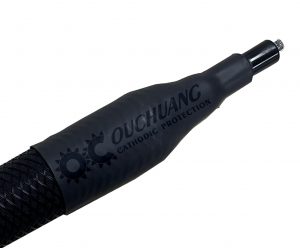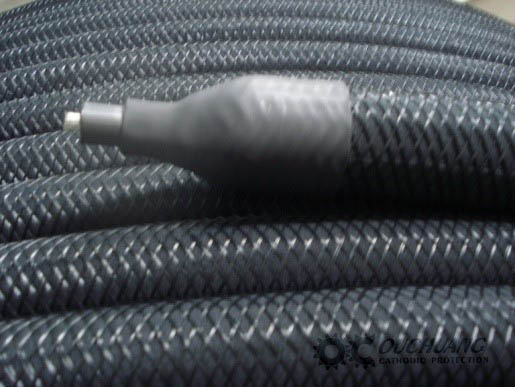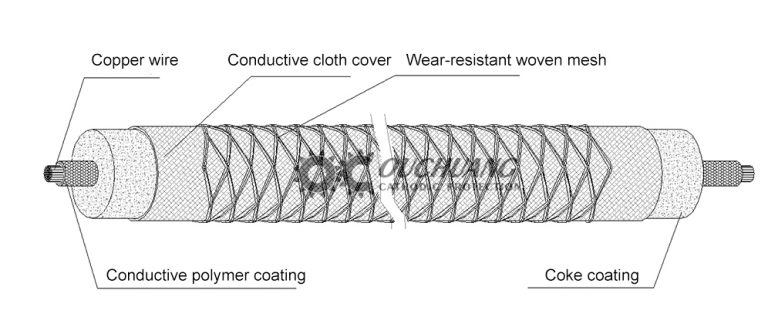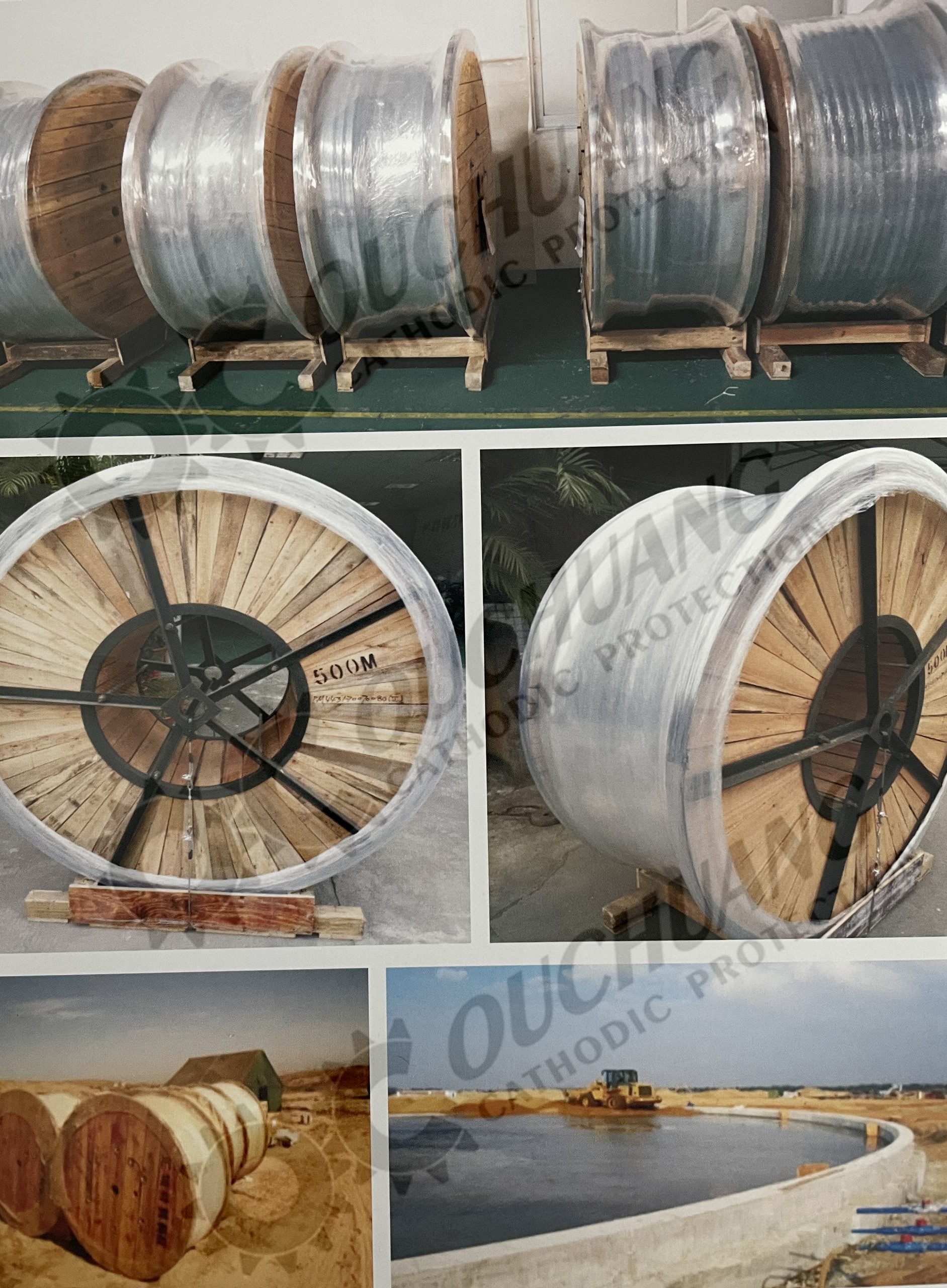Home>>>conductive Polymer Flexible Anode
conductive Polymer Flexible Anode
Introduction To Product
Basic structural components: Internal cables, MMO wires, pre-filled calcined petroleum coke powders, fabric coating layers and long fiber braid.
Internal cables: no-stop inner cables provide stable current for the anode; and 13 strands of copper wires are hinged to ensure the flexibility.
MMO wires: as an anode body, it is a mixture of iridium/tantalum oxide coated on the surface of titanium wires.
Calcined petroleum coke powders:
- The maximum run current density with cokebackfill in soil environment;
- The contact resistance between the auxiliary anodeand soil is reduced;
- Electrochemical reaction is performed between the carbon powder around the auxiliary anode (conductive polymer or MMO/Ti wire) and soil electrolyte, so as to prevent the protected matters from being subjected to electrochemical corrosion and prolong the service life of the auxiliary anode.


Fabric Jecket:
- The carbon powder shall be coated around the anode in a circular shape and with a certain filling density, so as to make the carbon powder not moved, loosened and dropped off in the process of storage and transportation, construction and use to affect the normal use and service life of the flexible anode.
- It shall have excellent wear resistance, puncturing resistance and mechanical strength;
- It shall have corrosion resistance, which is very important to apply under water.
Protective braid:
- During construction and erection, the textile coating shall be prevented from wearing by the flexible anode, so as to further restrain and fix the carbon powder and the fabric coating.
- It shall have excellent wear resistance and mechanical strength;
- It shall have corrosion resistance, which is very important to apply under water.
The structure of Conductive Polymer lexible anode

Product Usage
- Even protection current distribution;
- Minimal interference to surrounding metal structures;
- There is no shielding and interference in the dense area of complex pipe network;
- The flexible anode can be cut arbitrarily at the construction site according to the needs of the protected object, which is convenient and flexible to use;
- Good protection effect, especially for complex pipe network, old pipeline, storage tank bottom plate, high resistivity environment, etc., which is unmatched by other anodes;
- Flexible anode will not pollute the environment.
Flexible anode structure
Rated working current: 52mA/m
Basic size of flexible anode Finished product diameter: Φ38.0mm±2.0mm
Anode body Lead wire
Core structure: GB/T2951-2008 Nominal: 13.2mm²

Wire DC resistance:
GB/T3048.3-2007 “Test Methods for Electrical Properties of Wires and Cables Part III Conductor Performance Test of DC Resistance” Not more than 1.55Ω/km
Volume resistivity of conductive polymer sheath:
GB/T3048.4-2007 “Test methods for electrical properties of wires and cables Part III Volume resistivity test of semi-conductive rubber-plastic materials” 1.1-1.9 Ω-cm
Conductive polymer sheath impregnation test
GB/T11547-2008 “Determination of plastics resistance to liquid chemical reagents”
3%NaCl | Soak for seven days (168 hours) | Quality loss change rate | 1.0% |
| 3%Na2SO4 | Soak for seven days (168 hours) | Quality loss change rate | 1.0% |
| 10%NaOH | Soak for seven days (168 hours) | Quality loss change rate | 1.0% |
Toner:
Fixed carbon content: GB/T2001-2013 “Analytical Method for Coke Industry”, ≥ 98.0%
Particle size: YS/T587.12-2006 “Determination Method of Calcined Petroleum Coke for Carbon Anode Part 12: Determination of Particle Size Distribution”, 0.1mm -1.0 mm
Volume resistivity: GB/T24521-2009 “Coke resistivity test method”, ≤0.05Ω.m
Bursting strength of filling cloth cover:
ISO 3303-1990 “Rubber- or plastics- coated fabrics — Determination of bursting tength”, ≥500N
Mass per unit area: GB/T 4669-2008 “Determination of mass per unit length and mass per unit area of textile woven fabrics”, ≥210 g/m
Abrasion resistance times (0.600 water sandpaper): GB/T21196-2007 “Determination of abrasion resistance of textiles by Martindale method Part 2: Determination of sample damage”, ≥100 times
Puncture resistance: ASTM D4833-2007 “Standard Test Method for Puncture Resistance Index of Geotextiles, Mulch and Related Products”, ≥28kg
Outer braided filament
Linear density: GB/T 14343-2008 “Test Method for Linear Density of Chemical Fiber Filament”, ≥2000.0dtex
